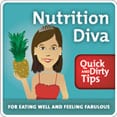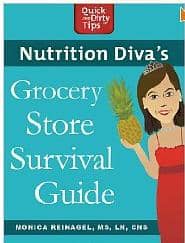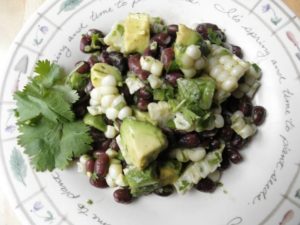 Think the debate over the national debt was contentious? That’s nothing compared to the war being waged in scientific circles about how much sodium it’s safe to eat. As researchers duke it out in the pages of medical journals, poor consumers are caught in a cross-fire of contradictory recommendations. In this week’s podcast, I tell you what you need to know to stay out of trouble. Read or listen to it here.
Think the debate over the national debt was contentious? That’s nothing compared to the war being waged in scientific circles about how much sodium it’s safe to eat. As researchers duke it out in the pages of medical journals, poor consumers are caught in a cross-fire of contradictory recommendations. In this week’s podcast, I tell you what you need to know to stay out of trouble. Read or listen to it here.
Blog
Chilled Cucumber Soup
This is a great recipe for late summer, when the weather is hot and cucumbers are plentiful.
Serves 2
1 medium cucumber, peeled and seeds removed
1 1/2 cups low-fat yogurt, divided
1/2 clove fresh garlic
1 1/2 teaspoons extra virgin olive oil
10-12 fresh mint leaves
1 small shallot (optional)
1/4 teaspoon sea salt or salt substitute
1/8 teaspoon white pepper
1. Chop the cucumber into chunks and add to jar or blender with 1 cup yogurt, garlic, olive oil, mint leaves and shallot. Blend mixture at medium-high speed, just until smooth.
2. Pour cucumber mixture into bowl and add salt, pepper, and the rest of the yogurt. Stir briefly, just to combine.
3. Serve in chilled bowls or mugs.
Note: Yogurt gets thinner when you stir or blend it. Adding the yogurt in two batches helps to keep the soup from getting too thin. Another trick is to strain 2 cups of yogurt for 3-4 hours in a thin-mesh strainer lined with cheesecloth and set over a bowl, until you have collected about 1/2 cup of whey. Discard the whey (or use it to add protein to a meal replacement shake or smoothie), and use the strained yogurt in the recipe.
Nutritional Information (per serving): Calories 160, Fat 6g, Carbohydrate 15g, Protein 10g
How much is an International Unit?
Q. Most nutrients seem to be measured in mg but some are shown as mcg or I.U. How do I convert these measurements into mg?
A. To convert micrograms (mcg) to milligrams (mg), divide by 1,000–or move the decimal point 3 positions to the left. 1000 mcg = 1.000 mg. But generally, you won’t need to convert between these two. We use micrograms for nutrients that occur in very small amounts (folate, vitamin B12, vitamin D, and vitamin K, for example). Instead of writing that a food contains 0.125 mg of vitamin K, it’s less confusing to write that it contains 125 mcg. You generally wouldn’t find milligram amounts of vitamin K in foods or supplements.
Converting International Units (I.U.) isn’t so simple–because it’s a different conversion for each nutrient. The I.U. is an arbitrary amount based on the amount of a given nutrient needed to produce a biological effect. Here are the conversions for the most common nutrients.
| Nutrient | Amount in 1 I.U. |
|---|---|
| Vitamin A | 0.3 mcg |
| Beta-carotene | 3.6 mcg |
| Vitamin D | 0.025 mcg |
| Vitamin E | 0.67 mg |
Want to learn more about food and nutrition? Subscribe to the Nutrition Diva podcast wherever you listen.
Shop Smart: Finding the Healthiest Options
 Q. We just moved to Texas from Ireland. I am trying to find a bread in local markets that has no sugar and low salt. I am also trying to find canned/jars of plain crushed tomatoes with no salt as I make my own sauce. I am shocked at the amounts of salt and sugar in everything here in the USA.
Q. We just moved to Texas from Ireland. I am trying to find a bread in local markets that has no sugar and low salt. I am also trying to find canned/jars of plain crushed tomatoes with no salt as I make my own sauce. I am shocked at the amounts of salt and sugar in everything here in the USA.
A. When you eat foods that are high in salt and/or sugar, you get accustomed to a greater degree of saltiness and sweetness. I guess the selection of processed foods you’re finding in American grocery stores shows what we’ve become accustomed to. (The good news? It works both ways: You can retrain your tastebuds to prefer less salt and sugar by gradually decreasing the amounts.)
See also: The Great Salt Debate
It should be possible to find some brands that are lower in salt and sugar, though, even in a mainstream grocery store. Ezekiel, Pepperidge Farm, and Nature’s Own all make breads that are relatively low in salt and sugar, for example. Hunt’s and DelMonte both produce canned tomatoes with no salt.
To make the hunt for healthier options a little easier, check out the following tools: Continue reading “Shop Smart: Finding the Healthiest Options”
Do You Need to Cut Back on Salt?
Nutrition Tips for Healthy Aging
A healthy diet can help you remain healthy and vital well into your golden years. But as you get into your 50s, your nutritional needs begin to change. I have tips on how to adjust your diet to meet your changing nutritional needs in this week’s podcast. Read or listen to it here.
Will More Chewing Help you Lose Weight?
Many magazine and internet articles recommend chewing each bite of food 30, 40, even up to 80 times as a weight loss strategy. And it’s true: Chewing your food more thoroughly can improve digestion, promote weight loss, and affect the nutritional value of foods—but there is a surprising twist to this story. Find out more in this week’s episode of the Nutrition Diva podcast.
Fresh Corn, Black Bean, and Avocado Salad
Serves 4
This salad is delicious made with canned corn but in the summer, when corn is in season, it becomes an extra special favorite! If you’re making corn on the cob for dinner, be sure to make an extra ear or two so you can make this salad the next day. Or, place an ear of corn (unshucked) in the microwave for 4 minutes on high. Wrap in a towel and let rest for five minutes before shucking. Continue reading “Fresh Corn, Black Bean, and Avocado Salad”

